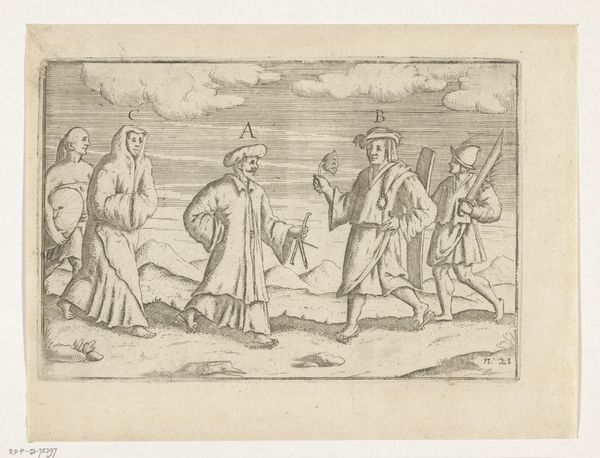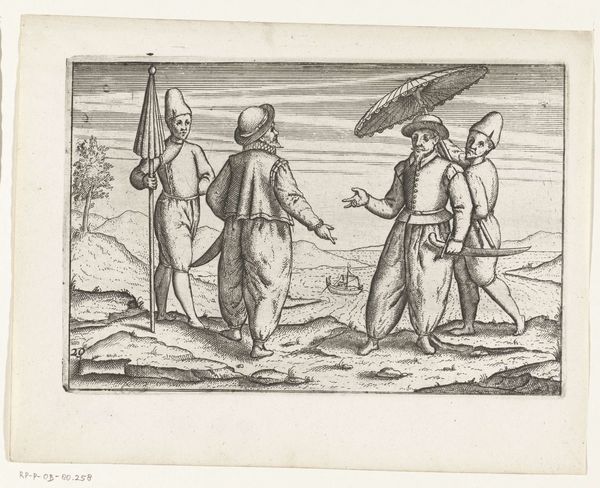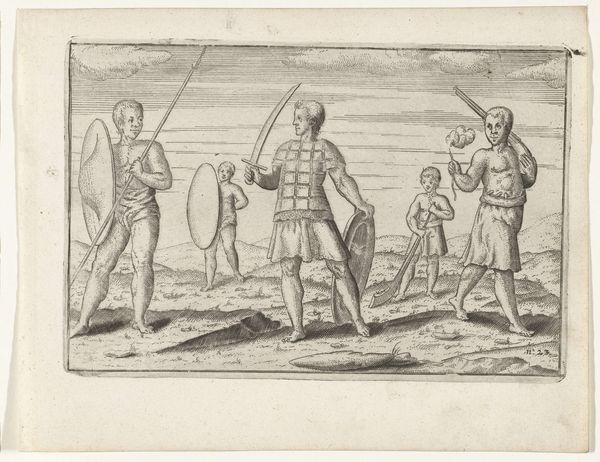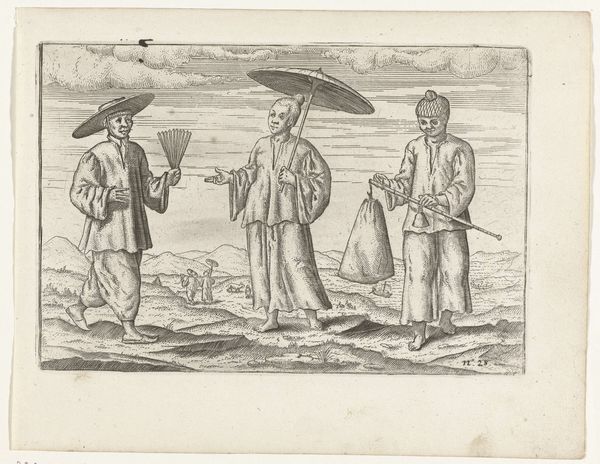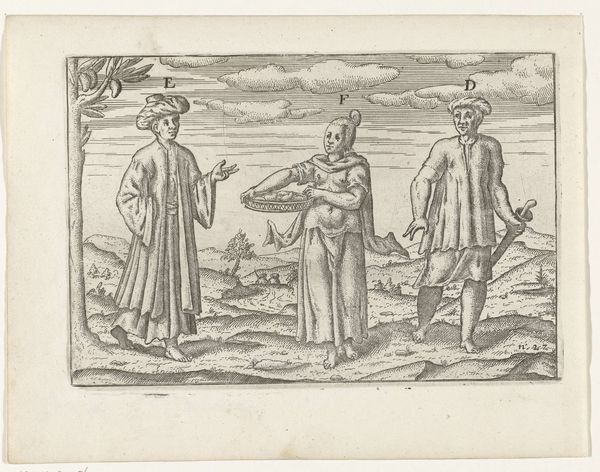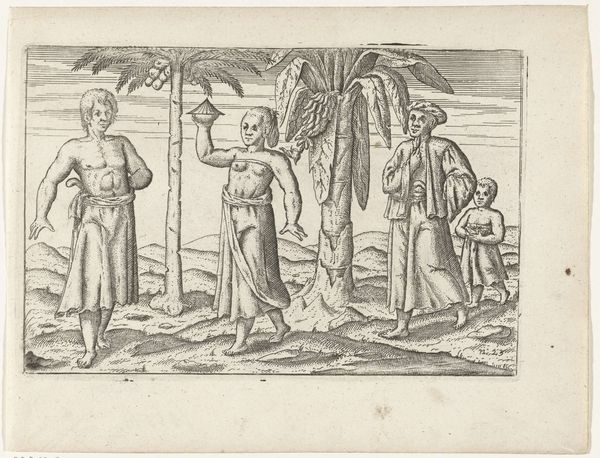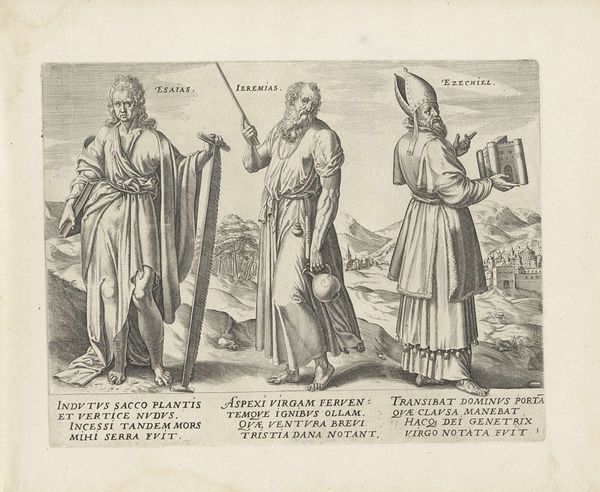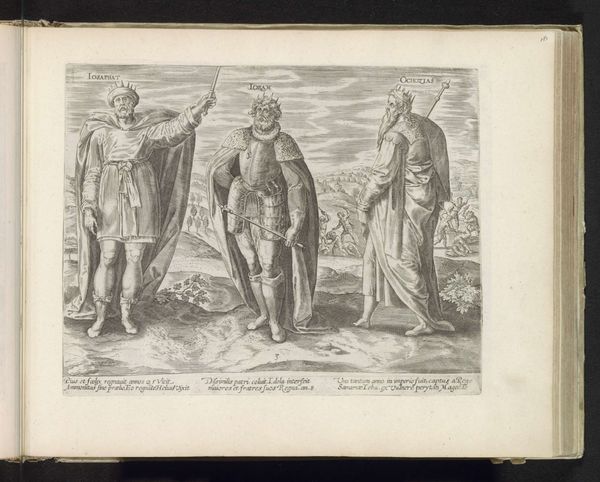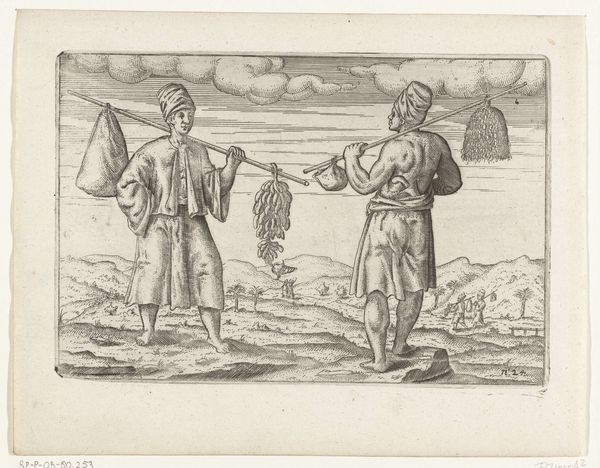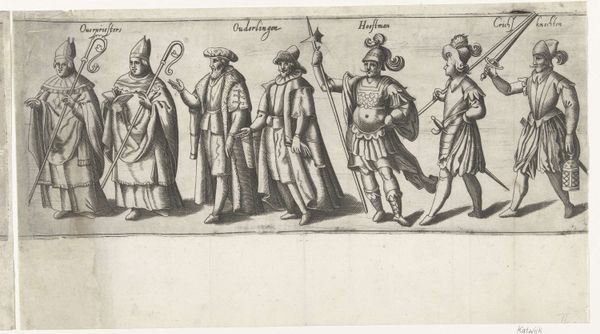
print, engraving
#
narrative-art
#
dutch-golden-age
# print
#
pen sketch
#
figuration
#
orientalism
#
genre-painting
#
engraving
Dimensions: height 145 mm, width 220 mm
Copyright: Rijks Museum: Open Domain
Editor: So, this print is titled *Arabische koopmannen te Bantam, 1596,* or *Arab Merchants at Bantam, 1596.* It's an engraving, dating from sometime between 1597 and 1646, and is held at the Rijksmuseum. It has this kind of... staged quality to it. What story do you think this is trying to tell us? Curator: That "staged quality" is key. Remember, prints like these circulated widely during the Dutch Golden Age and were often fueled by burgeoning colonial narratives. Consider the title itself: "Arabische koopmannen." It reflects a very specific, often exoticized, view of non-European cultures. What do you notice about how the figures are presented? Editor: Well, they seem sort of generalized, like types rather than individuals. Their clothing is the main focus, especially those impressive turbans. Curator: Exactly! Think about what that emphasis on clothing and "foreignness" achieves. The artist likely never encountered these figures directly. How does that distance inform the image’s construction and potential biases? Could it be reinforcing existing power dynamics of the time? Editor: It feels like it's othering them, setting them apart as distinctly "not Dutch". Like they're specimens, categorized and put on display. Curator: Precisely. And it's important to question what function these images played in justifying colonial expansion. Who was this print *for*, and what ideas about the “Orient” was it perpetuating? Editor: It's eye-opening to think about this print not just as a historical document, but as a piece of propaganda, really. I didn't see that at first. Curator: That's the power of historical context. It allows us to understand how art participates in and reflects larger socio-political currents. Looking closely at the context behind artistic choices can unveil layers of meaning. I’m glad we could unpack it together.
Comments
No comments
Be the first to comment and join the conversation on the ultimate creative platform.

